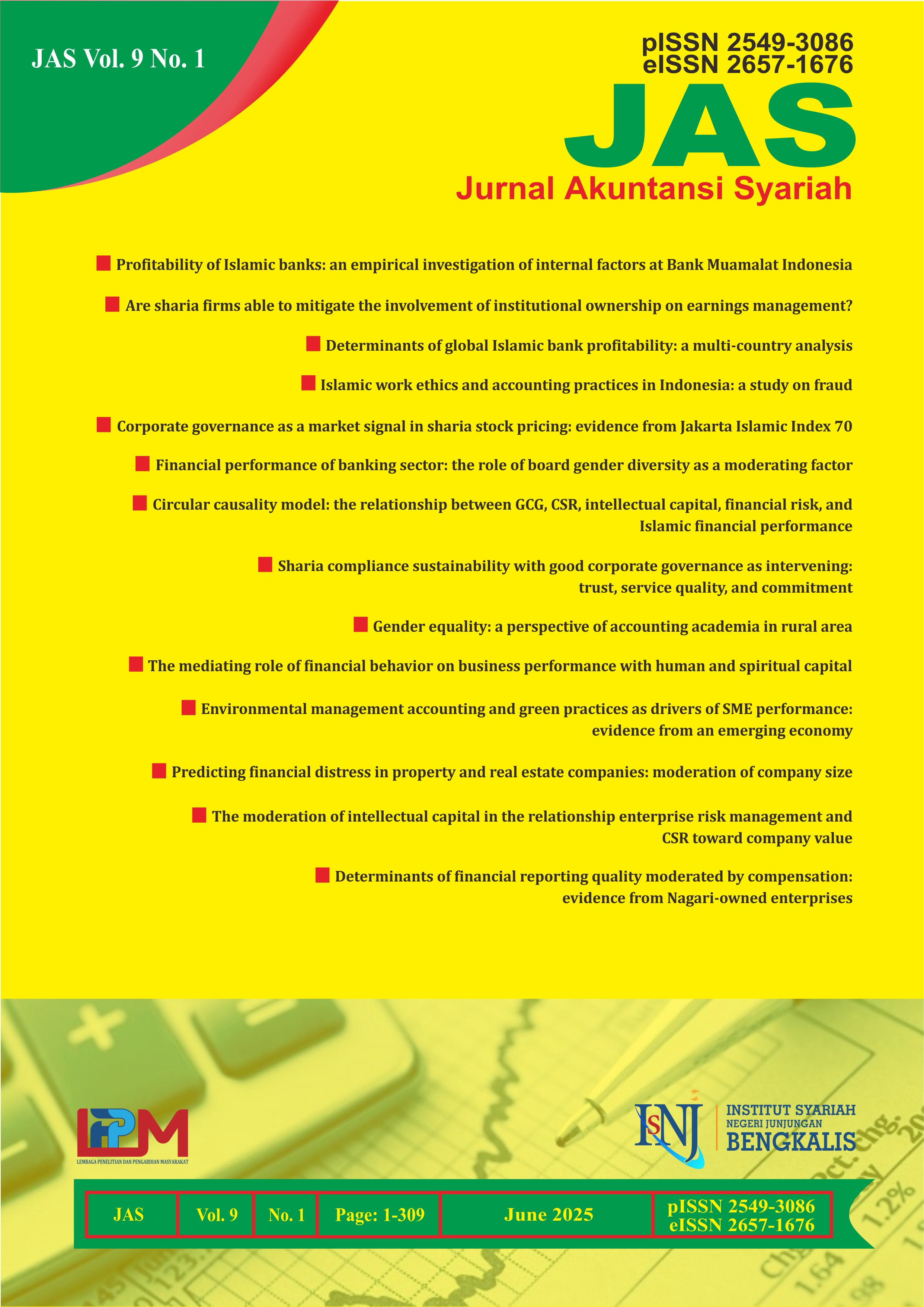Determinants of global Islamic bank profitability: a multi-country analysis
Abstract
Purpose – This study examines the effect of net operating margin, capital adequacy ratio, and operating expense ratio on return on assets with non-performing financing as a moderating variable. Method – The object of this research is all the strongest world banks listed on the TabInsight page, according to the Asia Banker, for 2020-2023. The result of purposive sampling is 71 companies with a total observation data of 284. The data collected were analyzed using panel data regression and moderation regression to test each hypothesis. Findings – The test results show that the net operating margin positively affects return on assets. The operating expense ratio negatively affects return on assets. At the same time, the capital adequacy ratio variable does not affect returns on assets. Furthermore, the non-performing financing weakens the effect of the capital adequacy ratio on return on assets. Conversely, the non-performing financing cannot moderate the effect of net operating margin and operating expense ratio on return on assets. Implications – Theoretically, this research can complement existing theories in finance and banking, especially in analysing the profitability of banks or Islamic financial institutions. Practically, these research results and the measurement of the proper financial performance of banks will be a reference for investors in determining plans.
Downloads
Copyright (c) 2025 JAS (Jurnal Akuntansi Syariah)

This work is licensed under a Creative Commons Attribution-NonCommercial-ShareAlike 4.0 International License.
 Abstract Views: 495 |
Abstract Views: 495 |  PDF Downloads: 363
PDF Downloads: 363










































